- Emerging Leader
-
Accountable, Emotionally Intelligent, Learning Focused
Learning Outcomes
Help employees:
- Define allyship and core concepts related to being an ally.
- Recognize allyship accountabilities.
- Learn how to practice allyship in the workplace.
The Learning Experience
Training Download (PPT) 3 hours
Ready-to-use training deck, designed for effortless customization and virtual or in-person facilitation by a member of your team.How to Be an Ally
Equip employees with the knowledge and skills they need to be allies to their colleagues.
Training Overview
HOW TO BE AN ALLY
| Target Audience |
General employees |
|---|---|
|
Target Length |
Three hours |
|
Training Materials |
Speaker's notes are included in the notes pane section of each slide. Use these to plan and practice the training session. Note: Text in italics are written to the facilitator and are not meant to be read aloud. Activity slides are scattered throughout this training deck and are clearly marked "Activity" in a bar on the left side of the slide. Instructions for activity facilitation can be found in the notes section of each slide. |
Recommended Customizations
- Review all slides and adjust the language or content as needed to suit your organizational context and culture.
- The pencil icon above denotes slides requiring customization of the slide or the speaker's notes, for example, adding in an organization-specific process.
- Customization instructions are found in the notes pane.
- Prepare for this training by reviewing the speaker's notes and instructions well in advance of delivery.
- Conducting training over two sessions:
- If you wish to conduct this training over two sessions, present Module 1 on the first day and Module 2 on the second. The Handbook will be the same for both modules.
- Customize the agenda on slide 4 accordingly.
Training Session Materials
- How to Be an Ally Handbook(same Handbook for both modules)
- Training session feedback form
Tips:
- Adjust the speaker's notes on the slides before (or after) any slides you modify or delete to ensure logical transitions between slides.
- Update the agenda to reflect new timings if major modifications are made.
- Even seasoned leaders and employees need to be reminded of the basics now and again. Rather than delete more basic slides, cut back on the amount of time spent covering them and frame the content as a refresher.
- If you wish to connect this training to your 360 program or individual development plans, modify the speaker's notes accordingly.
- There is an optional video on slide 36. If you wish to play this video, you will need audio functionality.
Agenda
| Time | Topic |
|---|---|
| 9:00am-9:15am |
|
| 9:15am-10:40am | Module 1: What does it mean to be an ally? |
| 10:40am-10:45am | Break |
| 10:45am-11:50am | Module 2: Allyship accountabilities and responsibilities |
| 11:50am-12:00pm | Wrap-up |
Learning Objectives
- Define allyship and core concepts related to being an ally
- Recognize allyship accountabilities
- Learn how to practice allyship in the workplace
Ground Rules
- Allyship is a sensitive topic. Set ground rules before beginning the training.
- Respect each other and avoid judgment
- Share only what you are comfortable with and maintain confidentiality
- Know that everyone's experience is valid
- Allow people to finish their thoughts
- Use "I" statements
What does it mean to be an ally?
Activity
Personal reflection
Think of a time when someone stood up for you or when you witnessed someone standing up for another person.
- How did that make you feel?
- How did it have an impact on your life?
What does allyship mean to you?
What does it mean to be an ally?
| A | L | L | Y |
|---|---|---|---|
|
Always center on the impacted |
Listen and learn from the oppressed |
Leverage your privilege |
Yield the floor |
Allies foster inclusive work environments
Being different due to inherent diversity traits/identities
(race, gender, etc.)
- Being different due to inherent diversity traits/identities
(race, gender, etc.) - Being on guard against biases
- Impacts on employee wellbeing and productivity
It's not enough to think you're an ally
I see myself as an ally to colleagues of other races and ethnicities

Black women have strong allies in my workplace

Activity
To be or not to be
Individual Brainstorm
Complete the statements:
- "I care about allyship because…"
- "I am hesitant to be an ally because…"
Paired Discussion
Find a partner and discuss your statements.
Debrief
Share your thoughts on your brainstorming and discussion.
- Why do you think it's important to reflect on why we want to be allies or why we may have some reservations?
Learn about the implications of social structures and systems of inequality

*This is not an exhaustive list of social structures/systems of inequality/privileges
Source: Adapted from BMC Public Health
Allyship begins with recognizing your privilege and power

|
Top of the coin: privilege
|
|
The coin
|
|
|
Bottom of the coin: oppression
|
Anyone can be an ally

*This is not an exhaustive list
Source: BMC Public Health
Activity
Privilege Self-Assessment
Individual Activity
Complete the self-assessment on page 7 of the Handbook.
Once complete, reflect on the following:
- Have you ever considered any of the items you placed a checkmark beside as an advantage or a disadvantage?
Debrief
Share your reflections with the group.
Equip yourself to be an ally by learning key concepts
Anti-oppression
Anti-oppression is the active practice of challenging and resisting oppressive systems on an ongoing basis.
Anti-racism
Anti-racism is the practice of opposing racism by challenging values, structures, systems, and behaviors that further perpetuate systemic racism and aiming to change the status quo. It is an active process that deconstructs power imbalances between racialized and white people.
What if I make a mistake?
It's okay!
Allyship is not about perfection. You won't always get it right. It's a journey of learning and unlearning.
Own your mistake
- Apologize for your mistake, even if you didn't intend harm.
- Listen graciously while being called in or out and build your capacity to receive criticism.
- Hold yourself accountable to changing your behavior.
Listen
- Proactively educate yourself.
- Don't expect those you're trying to ally with to educate you or show you the right way.
Keep trying
- You're going to keep making mistakes.
- Embrace the process of allyship by constantly answering these statements:
- "I want to learn more about…"
- "I intend to listen more closely to…"
- "I will pay more attention to…"
- "I will get better at…"
- "I will show up with…"
- "I will do…"
- "I will work on being more…"
- Source: S.P.A.R.K.
What would you do?
Group discussion
In your groups, select one or two scenarios and discuss how you would respond as an ally.
Scenario debrief
Share your thoughts on the scenarios you selected.
Self-reflection
Take a moment to think about what factors may have contributed to your response as an ally.
Allyship requires active behaviors
Learning and unlearning
Find opportunities to learn about those who are different from you to unlearn and challenge your biases and assumptions.
Speaking Up
Leverage your privilege and power by standing up for those who may not be able to stand up for themselves.
Owning your mistakes
Graciously accept mistakes and take it as an opportunity to learn.
Uplifting those around you
Raise those who are around you to ensure that they are accessing the same opportunities and experiences.
Supporting colleagues
Listen to the experiences of your colleagues and identify opportunities to support them.
As allies, we'll all encounter challenging situations
Hearing an inappropriate joke
Watching someone be left out
Noticing that someone is spoken over
Witnessing someone be hostile
Allyship accountabilities and responsibilities
Agenda
|
Agenda |
Topic |
|---|---|
|
10:45am-11:50am |
Module 2: Allyship accountabilities and responsibilities |
| 11:50am-12:00pm | Wrap-up |
Activity
What are some challenging situations you have encountered at work?
Brainstorm some challenging situations you've encountered at work. → For each situation, write down why the situation was uncomfortable for you.
Example
Someone made an inappropriate joke about a colleague's cultural practices.
- I didn't know who the people involved were.
- I didn't know what to say at that moment.
- I didn't think it was my place to say anything.
Speak out against non-inclusive behavior
Calling In
- A private and intentional conversation with a colleague regarding problematic behavior that needs to be addressed.
- A learning opportunity for the colleague to reflect on their actions, understand the impact of their actions, and hold themselves accountable for improving their behavior in the future.
Calling Out
- A public confrontation of a person's non-inclusive or discriminatory behavior.
- Call someone out when:
- An individual isn't receptive to call-in conversations.
- An individual is becoming aggressive.
- You need to prevent further offense or there is immediate danger.
Handle difficult conversations with EASE
| E | A | S | E |
|---|---|---|---|
|
Engage |
Absorb |
Share |
End |
Removing someone from a harmful situation
- Remove the person being harmed
- Remove the person doing the harm
Leverage empathy to support your colleagues in the workplace
|
Says |
Thinks |
|
Does |
Feels |
"Empathy is the ability to recognize, understand, and share the thoughts of another person"
– Psychology Today
Empathy means refraining from focusing on yourself when others share
- Recognize that it does not feel great to be left out, tokenized, or othered.
- Do not provide solutions based on what you would do.
- Avoid putting your similar experience in the center of someone else's current experience.
Activity
Build your empathy map

Think of a time when you needed an ally.
Complete the empathy based on your partner's identity and situation.
Sometimes your support as an ally will be less obvious
- Extend your network
- Sponsor someone in the organization
- Make yourself available to your colleagues
- Mentor a peer
- Recognize your colleague's efforts
- Adopt inclusive work practices
Activity
Allyship Tactics
How can you respond to certain situations as an ally?
- Call the other person in
- Have a meaningful conversation
- Share the space
Adopt a dynamic learning mindset
DLM
Dynamic learning mindset (DLM)
- Seeks to learn from mistakes
- Open to feedback
- Resilient in change through calculated risk
- Committed to growth
- Focused on the cumulative power of effort
Adapted from Dweck, Mindset: The New Psychology of Success
Activity
Create a learning mural
Take a couple of sticky notes and write down resources that you and your colleagues can use to continue learning on your allyship journey.
[Organization's name] Diversity, Equity, and Inclusion learning resources
How to use allyship to promote DEI at the organization
Activity
How will you hold yourself accountable?
|
Goals |
Action Item |
|---|---|
|
Support breaking glass ceilings |
Sponsor a junior employee in my department |
Write down two or three personal allyship goals and share them with your group. As a team, identify actions to help each other reach your goals.
You're not in this alone
Training Session Evaluation
Works Cited
Crossman, Ashley. "The Concept of Social Structure in Sociology?" ThoughtCo, 28 June 2019. Accessed 9 Nov. 2020.
Dweck, Carol. Mindset: The New Psychology of Success. Ballentine Books, 2007.
"Empathy." Psychology Today, n.d. Accessed 9 Nov. 2020.
"Empowering Workplaces Combat Emotional Tax For People of Colour in Canada." Catalyst,
4 July 2019. Accessed 9 Nov. 2020.
Erskine, Samantha E., and Diana Bilimoria. "White Allyship of Afro-Diasporic Women in the Workplace: A Transformative Strategy for Organizational Change." Journal of Leadership & Organizational Studies, vol. 26, no. 3, 2019, pp. 319-338.
Gurchiek, Kathy. "Workplace Allies Serve as Ambassadors for Change." SHRM, 1 Mar. 2019. Accessed 9 Nov. 2020.
Jha, Rega, and Tommy Wesely. "How Privileged Are You?" BuzzFeed, 10 Apr. 2014. Accessed
9 Nov. 2020.
"Many white employees aren't stepping up as allies to Black women" Lean In, 2023. Accessed 7 July 2023.
Nixon, Stephanie A. "The coin model of privilege and critical allyship: implications for health."
BMC Public Health, vol. 19, no. 1, 2019.
"Purl." YouTube, uploaded by Pixar SparkShorts, 14 Feb. 2019.
Reed, Kayla. "Ally." Twitter,13 June 2016. Accessed 09 Nov. 2020.
Spark4Community. "Why I Don't Call Myself an 'Ally'." S.P.A.R.K., 24 July 2017. Accessed
9 Nov. 2020.
Spicer, Andre. "The Psychology of Being a Better Ally in the Office – and Beyond." City Press Office – City, University of London, 8 July 2020, Accessed 9 Nov. 2020.
"Students Learn A Powerful Lesson About Privilege." YouTube, uploaded by BuzzFeedVideo,
9 Dec. 2014, Accessed 9 Nov. 2020.
"White employees see themselves as allies—but Black women and Latinas disagree." Lean In, 2020. Accessed 9 Nov. 2020.

 Business Acumen for HR Professionals
Business Acumen for HR Professionals
 Solve HR Problems Using Systems Thinking
Solve HR Problems Using Systems Thinking
 Equip HR to Foster a Dynamic Learning Mindset
Equip HR to Foster a Dynamic Learning Mindset
 Manage Your HR Brand
Manage Your HR Brand
 Equip Managers to Create High-Performing Teams
Equip Managers to Create High-Performing Teams
 Equip Managers to Improve Engagement Action Planning
Equip Managers to Improve Engagement Action Planning
 Equip Managers to Effectively Manage Virtual Teams
Equip Managers to Effectively Manage Virtual Teams
 Equip Managers to Conduct Effective Pay Conversations
Equip Managers to Conduct Effective Pay Conversations
 Delegate and Build Accountability
Delegate and Build Accountability
 Effectively Manage Remote Sales Teams
Effectively Manage Remote Sales Teams
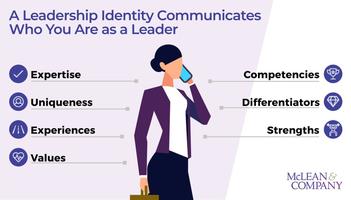 Define a Leadership Identity
Define a Leadership Identity
 Navigate Team Dynamics
Navigate Team Dynamics
 Demystify the Design Thinking Mindset
Demystify the Design Thinking Mindset
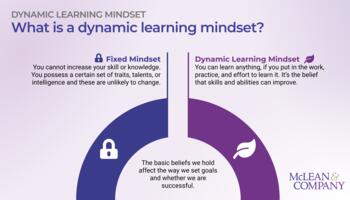 Equip Managers to Foster a Dynamic Learning Mindset
Equip Managers to Foster a Dynamic Learning Mindset
 Equip Managers to Maintain Employee Engagement in a Hybrid World
Equip Managers to Maintain Employee Engagement in a Hybrid World
 Build Trust as a Leader
Build Trust as a Leader
 How to Be an Ally
How to Be an Ally
 Equip Managers to Engage in Career Development Conversations with Employees
Equip Managers to Engage in Career Development Conversations with Employees
 Negotiate with Empathy
Negotiate with Empathy
 Presentation Skills for Managers
Presentation Skills for Managers
 Identify Strategic Direction to Drive Aligned Action
Identify Strategic Direction to Drive Aligned Action
 Leverage Business Acumen and Financial Literacy
Leverage Business Acumen and Financial Literacy
 Learn and Lead Through Influence
Learn and Lead Through Influence
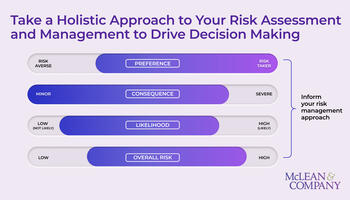 Adopt Risk-Taking and Management Strategies
Adopt Risk-Taking and Management Strategies
 Overcome the Challenges of Project Management
Overcome the Challenges of Project Management
 Navigate the Complexities of HR Facilitation
Navigate the Complexities of HR Facilitation
 Manage Teams to Drive Results
Manage Teams to Drive Results
 How to Be an Effective Change Agent
How to Be an Effective Change Agent
 How to Be a Successful Change Champion
How to Be a Successful Change Champion
 Demonstrate Customer Focus as an Emerging Leader
Demonstrate Customer Focus as an Emerging Leader
 The Emerging Leaders' Guide for Time Management
The Emerging Leaders' Guide for Time Management
 Lead Effective One-on-Ones
Lead Effective One-on-Ones
 Demonstrate Personal Accountability
Demonstrate Personal Accountability
 Equip Managers to Recruit Quality Staff
Equip Managers to Recruit Quality Staff
 Build an Effective Formal Mentoring Relationship
Build an Effective Formal Mentoring Relationship
 Be an Active Ally
Be an Active Ally
 Foundations of Diversity, Equity, and Inclusion
Foundations of Diversity, Equity, and Inclusion
 Keep Your Best and Brightest – A Manager’s Guide to Stay Conversations
Keep Your Best and Brightest – A Manager’s Guide to Stay Conversations
 A Manager's Guide to Writing Great Job Descriptions
A Manager's Guide to Writing Great Job Descriptions
 A Manager's Guide to Onboarding
A Manager's Guide to Onboarding
 Anti-Racism
Anti-Racism
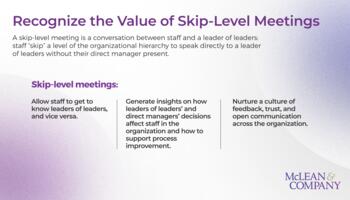 Lead Effective Skip-Level Meetings
Lead Effective Skip-Level Meetings
 Practice Starting a Great Mentoring Relationship
Practice Starting a Great Mentoring Relationship
 Build Effective Mentoring Relationships
Build Effective Mentoring Relationships
 How to Be an Ally – Allyship Foundations
How to Be an Ally – Allyship Foundations
 How to Be an Ally – Allyship in Action
How to Be an Ally – Allyship in Action
 Develop Storytelling in HR
Develop Storytelling in HR
 Identify and Extinguish Manager and Employee Burnout
Identify and Extinguish Manager and Employee Burnout
 Master the 3i’s of Employee Engagement
Master the 3i’s of Employee Engagement
 Increase Employee Engagement Using the 3i’s
Increase Employee Engagement Using the 3i’s
 Emotional Intelligence in Leadership
Emotional Intelligence in Leadership
 Lead With Emotional Intelligence
Lead With Emotional Intelligence
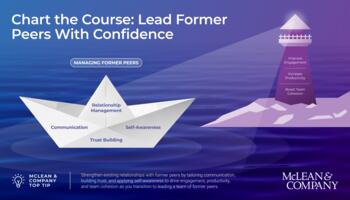 Strengthen Relationship Dynamics as You Transition From Peer to Leader
Strengthen Relationship Dynamics as You Transition From Peer to Leader
 Build HR Influence Through Curiosity and a Coach Approach
Build HR Influence Through Curiosity and a Coach Approach
 Activate Networks to Enable Collaboration
Activate Networks to Enable Collaboration
 Equip Managers to Activate Networks to Enable Collaboration
Equip Managers to Activate Networks to Enable Collaboration
 Support First-Time Leaders to Practice Neuroinclusive Leadership
Support First-Time Leaders to Practice Neuroinclusive Leadership
 Practice Key Coaching Behaviors
Practice Key Coaching Behaviors
 Build the Foundation for Effective Coaching
Build the Foundation for Effective Coaching
 Coach High-Performing Employees for Success
Coach High-Performing Employees for Success
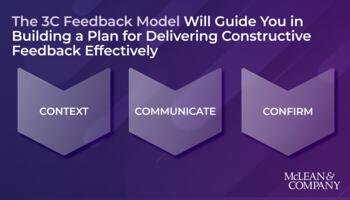 Give Feedback
Give Feedback
 Empower Your Team Through Coaching and Curiosity
Empower Your Team Through Coaching and Curiosity
 Lead Through Change
Lead Through Change
 Reinforce Culture and Strategy With Recognition
Reinforce Culture and Strategy With Recognition
 Inspire Your Team Through the Organization’s Mission, Vision, and Values
Inspire Your Team Through the Organization’s Mission, Vision, and Values
 Reinforce Behavior With Employee Recognition
Reinforce Behavior With Employee Recognition
 Effectively Resolve Conflicts
Effectively Resolve Conflicts
 Train Managers to Effectively Navigate Conflict
Train Managers to Effectively Navigate Conflict
 Practice Managing Employee Reactions to Complex Poor Performance Conversations
Practice Managing Employee Reactions to Complex Poor Performance Conversations
 Improve Poor Employee Performance
Improve Poor Employee Performance
 Equip Managers to Coach Employees for High Performance and Development
Equip Managers to Coach Employees for High Performance and Development
 Equip Managers to Adopt Inclusive Leadership Behaviors
Equip Managers to Adopt Inclusive Leadership Behaviors
 Equip Managers to Lead Through Change
Equip Managers to Lead Through Change
 Equip Managers to Improve Poor Performance in a Hybrid Environment
Equip Managers to Improve Poor Performance in a Hybrid Environment
 Effective Virtual Meetings
Effective Virtual Meetings
 Foundational Communication Skills
Foundational Communication Skills
 Foster Effective Feedback in the Workplace
Foster Effective Feedback in the Workplace
 Train Managers to Master Difficult Conversations
Train Managers to Master Difficult Conversations
 Difficult Conversations at Work – Reflect on Strengths and Opportunities for Improvement
Difficult Conversations at Work – Reflect on Strengths and Opportunities for Improvement
 Difficult Conversations at Work – Practice and Plan Effective Strategies
Difficult Conversations at Work – Practice and Plan Effective Strategies
 Influence Organizational Stakeholders
Influence Organizational Stakeholders
 Train Managers on the Art of Influence
Train Managers on the Art of Influence
 Navigate the Change Management Process
Navigate the Change Management Process
 Biases and Heuristics
Biases and Heuristics
 Train Managers in the Art of Decision Making
Train Managers in the Art of Decision Making
 How to Prioritize Your Work When Everything Feels Important
How to Prioritize Your Work When Everything Feels Important
 Train Managers to Build Key Resilience Behaviors
Train Managers to Build Key Resilience Behaviors
 Goal Management Guide
Goal Management Guide
 Equip Managers to Have Effective Performance Appraisal Discussions
Equip Managers to Have Effective Performance Appraisal Discussions
 Data Literacy for HR Professionals Module 1
Data Literacy for HR Professionals Module 1
 Data Literacy for HR Professionals Module 2
Data Literacy for HR Professionals Module 2
 An Introduction to Data Literacy
An Introduction to Data Literacy
 Data Interpretation and Storytelling
Data Interpretation and Storytelling
 Foundational Data Literacy
Foundational Data Literacy
 Adopt Inclusive Leadership Behaviors
Adopt Inclusive Leadership Behaviors
 Develop Leadership Presence Through Storytelling
Develop Leadership Presence Through Storytelling